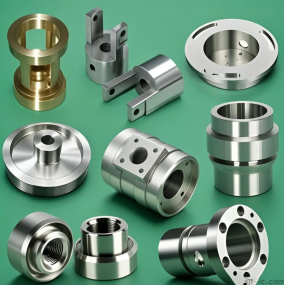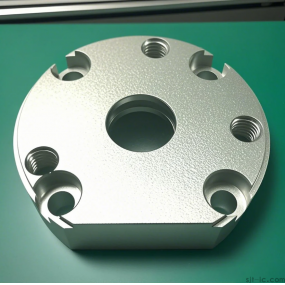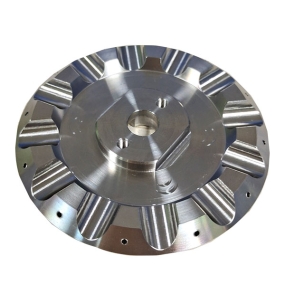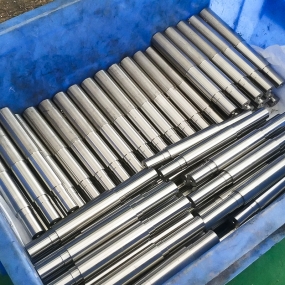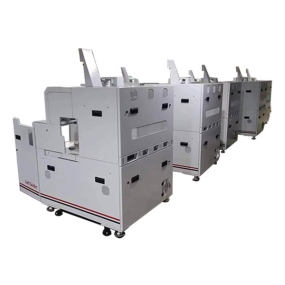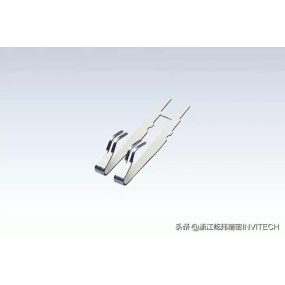Stainless steel is the abbreviation for stainless acid resistant steel. Steel grades that are resistant to weak corrosive media such as air, steam, water, or have non rusting properties are called stainless steel; Steel grades that are resistant to chemical corrosion media (such as acid, alkali, salt, etc.) are called acid resistant steel. Its application fields are very wide, but many stainless steel precision machining manufacturers are still unclear about the material types, grades, and properties of stainless steel. EMAR Precision Technology is dedicated to precision machining of stainless steel and has summarized the commonly used grades and properties of stainless steel for you. Let's take a look together.
SUS200 chromium nickel manganese austenitic stainless steel
SUS300 chromium nickel austenitic stainless steel
SUS301- Good ductility, used for molding products. It can also be rapidly hardened through mechanical processing. Good weldability. Wear resistance and fatigue strength are superior to 304 stainless steel
SUS302- Corrosion resistance is the same as 304, and its strength is better due to its relatively higher carbon content.
SUS303- By adding a small amount of sulfur and phosphorus, it is easier to cut than 304.
SUS304- General Model; That is, 18/8 stainless steel. The GB grade is 0Cr18Ni9.
SUS309 has better temperature resistance compared to 304.
SUS316- the second most widely used steel grade after 304, mainly used in the food industry and surgical equipment, with the addition of molybdenum element to obtain a special corrosion-resistant structure. Due to its better resistance to chloride corrosion compared to 304, it is also used as "ship steel". SS316 is commonly used in nuclear fuel recovery devices. 18/10 grade stainless steel is usually combined with this application grade.
SUS321 has similar properties to 304, except that the addition of titanium reduces the risk of weld corrosion
SUS400 ferritic and martensitic stainless steel
SUS408- Good heat resistance, weak corrosion resistance, 11% Cr, 8% Ni.
SUS409- the cheapest model (British and American), commonly used as an exhaust pipe for automobiles, is a ferritic stainless steel (chromium steel).
SUS410 martensitic (high-strength chromium steel) has good wear resistance but poor corrosion resistance.
SUS416- The use of sulfur has improved the processing performance of the material.
SUS420- "Tool grade" martensitic steel, similar to the earliest stainless steel such as Brinell high chromium steel, is also used for shell surgical tools and can be made very shiny.
SUS430 ferritic stainless steel, used for decoration, such as in automotive accessories. Good formability, but poor temperature resistance and corrosion resistance.
SUS440 is a high-strength tool steel with slightly higher carbon content. After appropriate heat treatment, it can achieve high yield strength and a hardness of up to 58HRC, making it one of the hardest stainless steels. The most common application is the razor blades we use in our daily lives. There are three universal models, namely 440A, 440B, and 440C, in addition to 440F (which is an easy to machine model).
SUS500- Heat resistant chromium alloy steel.
SUS600 martensitic precipitation hardening stainless steel
SUS630- the most commonly used precipitation hardening stainless steel model, usually also known as 17-4; 17% Cr, 4% Ni.
201 stainless steel material has the characteristics of acid resistance, alkali resistance, high density, polishing without bubbles and pinholes. It is a high-quality material for producing various watch cases and strap covers, mainly used for decorative tubes, industrial tubes, and some shallow stretching products.
Chemical composition%:
Ghemicai composition (WT%)
Carbon (C): 0.15
Silicon (Si): 0.75
Manganese (Mn): 5.5-7.5
Chromium (Cr): 16.0-18.0
Nitrogen (N): 0.25
Nickel (Ni): 3.5-5.5
Phosphorus (P): 0.06
Sulfur (S): 0.03
Physical performance:
Tensile strength: 1000000 to 180000 psi
Yield strength: 50000 to 150000 psi
Elongation rate: 50 to 60%
Elastic modulus: 29000000psi
Density: 0.2801bs/cubicinch (7.93kg/cm ³)
Application field description:
There are many reasons why surface processing of stainless steel is important in the field of construction applications. The requirement for a smooth surface in a corrosive environment is because the surface is smooth and not prone to scaling. The deposition of dirt can cause stainless steel to rust or even corrode.
In spacious halls, stainless steel is the most commonly used material for elevator decorative panels. Although fingerprints on the surface can be wiped off, it affects the appearance, so it is best to choose a suitable surface to prevent fingerprints from being left.
Sanitary conditions are important for many industries, such as food processing, catering, brewing, and chemical engineering. In these application areas, the surface must be easy to clean daily and chemical cleaning agents are often used.
Stainless steel is the best material in this regard. In public places, the surface of stainless steel is often scratched and scribbled. However, an important characteristic of stainless steel is that it can be cleaned off, which is a significant advantage over aluminum. The surface of aluminum is prone to leaving marks, which are often difficult to remove. When cleaning the surface of stainless steel, it should be cleaned along the grain of the stainless steel, as some surface processing patterns are unidirectional.
Stainless steel is most suitable for hospitals or other areas where hygiene conditions are crucial, such as food processing, catering, brewing, and chemical engineering. This is not only because it is easy to clean daily and sometimes requires the use of chemical cleaning agents, but also because it is not prone to bacterial growth. Experiments have shown that the performance in this regard is equivalent to that of glass and ceramics.


 Spanish
Spanish Arabic
Arabic French
French Portuguese
Portuguese Belarusian
Belarusian Japanese
Japanese Russian
Russian Malay
Malay Icelandic
Icelandic Bulgarian
Bulgarian Azerbaijani
Azerbaijani Estonian
Estonian Irish
Irish Polish
Polish Persian
Persian Boolean
Boolean Danish
Danish German
German Filipino
Filipino Finnish
Finnish Korean
Korean Dutch
Dutch Galician
Galician Catalan
Catalan Czech
Czech Croatian
Croatian Latin
Latin Latvian
Latvian Romanian
Romanian Maltese
Maltese Macedonian
Macedonian Norwegian
Norwegian Swedish
Swedish Serbian
Serbian Slovak
Slovak Slovenian
Slovenian Swahili
Swahili Thai
Thai Turkish
Turkish Welsh
Welsh Urdu
Urdu Ukrainian
Ukrainian Greek
Greek Hungarian
Hungarian Italian
Italian Yiddish
Yiddish Indonesian
Indonesian Vietnamese
Vietnamese Haitian Creole
Haitian Creole Spanish Basque
Spanish Basque



